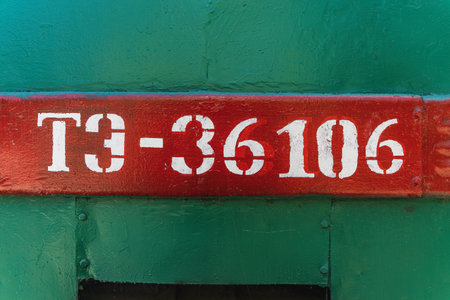Introduction: A Tapestry of British Divination
Across the rolling hills and mist-laden moors of Britain, a rich tradition of divination weaves through the fabric of daily life. For centuries, mystical arts such as palmistry, tea leaf reading, and other forms of fortune-telling have captured the British imagination, offering guidance and comfort in times of uncertainty. These practices are far more than mere parlour amusements; they reflect the nation’s enduring fascination with fate, destiny, and the unseen currents that shape our lives. From bustling city markets to quiet countryside cottages, each tradition carries its own distinct local flavour and cultural resonance, shaped by folklore and steeped in story. As we journey into the world of British divination, we’ll discover how palmistry stands alongside beloved customs like tasseography—tea leaf reading—and beyond, all contributing to a vibrant spiritual heritage that continues to enchant seekers across the land.
2. Palmistry: Reading Fate in the Palm of Your Hand
In the misty heartlands of Britain, palmistry—also known as chiromancy—has long held a subtle yet enduring fascination. Unlike its continental cousins, British palmistry is steeped in local lore, blending practical wisdom with an air of quiet mysticism. Historically, the art found its way from the Romani travellers who wandered the green lanes, offering insights at country fairs and bustling market days. Over centuries, it intertwined with Celtic traditions and Victorian curiosity, shaping a distinctly British approach to reading the hands.
The British Approach to Palm Reading
British palmists typically favour a gentle and narrative-driven style, weaving stories from the creases and mounts of the hand. Rather than dictating fate, they tend to see themselves as interpreters—guides illuminating possibilities rather than certainties. This echoes the British value of reserve and humility; destiny is suggested, not imposed.
Historical Influences on British Palmistry
| Era | Influence | Key Characteristics |
|---|---|---|
| Celtic Britain | Ancestral folk wisdom | Focus on intuition and natural cycles |
| Victorian Era | Scientific curiosity meets mysticism | Detailed hand charts and parlour readings |
| Modern Day | Personal empowerment & self-reflection | Narrative interpretations over predictions |
Local Wisdom: The Uniquely British Touch
Palmistry in Britain is rarely just about fortune-telling; it becomes a conversation—a sharing of stories between reader and querent. Often, readers draw upon idioms from English literature or reference folklore unique to their region. For example, a line may be likened to “a river winding through Yorkshire moors” or a mount compared to “the steadfast hills of Wales.” This poetic lens deepens the connection between personal fate and the wider landscape, reflecting how the British see themselves as part of both history and nature’s tapestry.
Thus, while palmistry is global, its British expression is one of gentle guidance—rooted in heritage, shaped by local imagination, and always open to new chapters written by the hands themselves.
![]()
3. Tea Leaf Reading: The Spirit of the British Cuppa
To wander into the world of British divination is to stumble upon the magical ritual of tea leaf reading, or tasseography—a practice as quintessentially British as the afternoon cuppa itself. Unlike the solitary introspection often associated with palmistry, tasseography blooms within a communal setting. Picture a gathering in a cosy parlour, teacups clinking gently, laughter and whispers mingling with the rising steam. Here, the art of reading tea leaves has long offered not just fortune-telling but also connection—a space for neighbours and kin to unravel mysteries together at the bottom of their cups.
Rooted deeply in British folklore, this tradition emerged alongside Britain’s tea culture, flourishing in Victorian times when every home harboured a teapot and a belief in omens. The ritual is delightfully simple yet enchanting: after sipping one’s brew, the seeker swirls the dregs, tips out excess liquid, and gazes at the mosaic of leaves left behind. Shapes and symbols emerge—an anchor for hope, a heart for love, a serpent for caution—each whispering secrets only intuition can decode. A practiced reader weaves these signs into stories, drawing from both personal insight and old country tales passed through generations.
Yet beyond symbolism, it’s the very act of gathering over tea that lends tasseography its enduring charm. While palmistry asks us to bare our hands and destinies to a reader, tea leaf reading invites us to share vulnerability within a circle of trust. In these moments, each cup becomes a vessel for possibility, each session an opportunity to pause and seek meaning amid everyday life. Thus, in comparing palmistry to tasseography, we uncover not only different tools but also contrasting spirits: one introspective and direct, the other communal and woven into the tapestry of British social life.
4. Other British Traditions: Runes, Crystal Gazing and More
While palmistry has woven its own thread through British folklore, it is but one strand in a rich tapestry of divination arts cherished across the UK. Beyond the gentle swirl of tea leaves and the lines on ones palm, seekers throughout Britain have long turned to an array of mystical practices—each echoing with the magic of story and tradition. Let us wander through these ancient woods and moonlit parlours, illuminating the homegrown and adopted methods that continue to enchant.
The Whisper of Runes
Runes, those enigmatic symbols carved onto stones or wood, trace their origins to Norse settlers but have since been lovingly adopted into British occult tradition. When cast upon a cloth, runes are believed to reveal hidden truths, drawing upon both intuition and ancestral wisdom. The act itself feels almost sacred—each rune a voice from the ancient past, murmuring guidance for those who listen with an open heart.
The Allure of Crystal Gazing
Crystal balls—often associated with Romany fortune-tellers at windswept fairs—hold a special place in British imagination. Known as scrying, this art invites practitioners to gaze deeply into polished quartz or glass until visions begin to form. Whether glimpsing future possibilities or unravelling tangled emotions, crystal gazing transforms the ordinary act of looking into a mystical communion between seer and spirit.
Divining by Nature: Ancient Woods & Weather Omens
The British landscape itself is alive with omens for those attuned to its language. From reading the direction of falling leaves in an ancient oak grove to interpreting weather patterns as messages from the unseen world, nature-based divination remains a quiet undercurrent in rural communities. These traditions honour the deep bond between land and people—a relationship steeped in reverence and subtlety.
A Comparative Glimpse at British Divination Arts
| Tradition | Main Tools | Cultural Roots | Typical Setting |
|---|---|---|---|
| Palmistry | Palm Lines | Romany/Global | Personal or Fairgrounds |
| Tasseography (Tea Leaves) | Teacups & Leaves | British Homegrown | Kitchens/Tea Parlours |
| Rune Casting | Runic Stones/Wooden Tiles | Norse/British Adoption | Sacred Groves/Homes |
| Crystal Gazing (Scrying) | Crystal Ball/Glass Sphere | Romany/Occult Revival | Tents/Fairs/Private Rooms |
The Enduring Thread of Storytelling
No matter which method one chooses—whether tracing runes on frosted mornings or peering into swirling glass—the true heart of British divination lies in its storytelling spirit. Each practice invites us to become participants in an unfolding myth, where intuition leads and every symbol whispers its own unique tale.
5. Contrasts and Connections: What Sets Palmistry Apart
When we delve into the mystical landscape of British divination, palmistry stands as both a solitary path and a thread in the vibrant tapestry of fortune-telling traditions. To truly appreciate its unique character, let us wander through its differences and intersections with cherished British practices like tea leaf reading (tasseography), tarot, and scrying.
Symbolism: The Language of Signs
Palmistry whispers secrets through the lines, mounts, and shapes etched upon our hands—a deeply personal map that is said to reveal one’s fate, talents, and life journey. In contrast, tea leaf reading finds meaning in fleeting patterns formed by leaves at the bottom of a cup; symbols arise spontaneously, drawing from folklore, intuition, and shared cultural archetypes. Tarot cards speak in images layered with centuries-old European symbolism, while crystal balls reflect visions shaped by atmosphere and the seer’s inner sight. Each method holds its own symbolic grammar, but palmistry’s is perhaps the most intimately tied to the individual’s physical self.
Methods: Rituals of Revelation
The ritual of palmistry is tactile and direct—a reader gently cradles your hand, tracing lines that have developed over your lifetime. Tea leaf reading is more ephemeral: it involves brewing tea in a cup without a strainer, sipping slowly with friends or family, then swirling and interpreting what remains. Tarot invites quiet contemplation or lively group readings; scrying requires focus on reflective surfaces. Palmistry’s method is grounded in the tangible body, while other traditions dance between material and metaphorical realms.
Social Settings: Private Moments or Community Gatherings?
Palmistry often unfolds in intimate settings—one-to-one encounters where confidences are exchanged in hushed tones. Tasseography, by contrast, frequently emerges after communal tea, fostering laughter and storytelling among friends or family members. Tarot readings might take place at bustling fairs or within close-knit circles, while scrying tends towards the solitary or ceremonial. Thus, each tradition carves its own social space: palmistry leans towards private revelation; tea leaves invite communal wonder.
Shaping Identity: Personal Insight and Community Ties
All these arts offer mirrors for self-reflection but do so in ways shaped by their British roots. Palmistry creates a sense of destiny entwined with one’s own flesh—a reminder that our stories are written on our bodies. Tea leaf reading nurtures community identity by transforming everyday rituals into moments of magic; it strengthens bonds through shared interpretation and collective imagination. Tarot and scrying blend personal insight with a sense of belonging to ancient European traditions. Ultimately, what sets palmistry apart is its fusion of physicality and fate—yet all these practices remind us that Britain’s spiritual heritage is as much about connection as it is about prediction.
6. Enduring Allure: Why These Traditions Remain Close to the British Heart
In the swift currents of contemporary British life, it may seem curious that ancient arts like palmistry, tea leaf reading, and other homegrown divination traditions have not faded into mere folklore. Instead, they flourish in cosy parlours and bustling cafés, whispered between friends or explored at festivals with a knowing smile. What is it about these old ways of seeing that continues to enchant the modern British soul? Perhaps it is their invitation to pause—to place one’s faith not only in data and deadlines but also in mystery and meaning. For all our technological progress, there remains a distinctly British affection for the gentle ritual of a cuppa, the soft rustle of shuffled cards, or the touch of a wise hand across one’s palm. These traditions weave together intuition and storytelling, offering comfort and insight when rationality falls short. In a world relentlessly pressing forward, such mystical practices serve as anchors to our roots and mirrors to our inner landscapes. They remind us that wisdom can be found in humble moments: at the bottom of a teacup, traced in the lines of a hand, or spun from tales shared on misty evenings. It is this blend of belonging, wonder, and quiet reflection that keeps divinatory arts alive in British hearts—timeless companions guiding us gently through the uncertainties of now.


